
When it comes to mixed drink preparation, you really can have too much of a good thing. A poor balance between your base alcohol and mixers can make a drink either too strong or too weak -- either way, it's too bad. This is why skilled and experienced mixologists all have one critical thing in common: an understanding of how mixed drink ingredients are measured and how their basic ratios work.
Basic Bar Measurements
Bar recipes don't always work in plain ratios -- they often call for measurements. Some of these measurements, like ounces and teaspoons, are recognizable even if you've never made a cocktail before. Others, like a dash or a pony, may not be as commonplace. The former is two or three drops -- while this may not sound like much, when using strongly-flavored ingredients like bitters, a little goes a long way. The latter is 1 ounce, or 2 tablespoons.
Free Pouring and Precision
There are two ways to mix a drink: by measuring the ingredients one by one, or by free pouring them. Free pouring is a system of estimating the amount of a pour by keeping count of the pour's duration -- usually about three or four seconds for 1 1/2 ounces, using a standard commercial pour spout. This is why some cocktail recipes use "counts" as measurements for their ingredients, like a three-count of vodka or a two-count of orange juice. This method is generally imprecise, though, and if you want to carefully control your ingredient ratios, you should measure your ingredients with measuring spoons or a jigger. This is a small, two-sided measuring tool that comes in sizes frequently used by bartenders -- one side may measure 1 1/2 ounces, while if you flip it over, the other side measures 1/2 ounce.
Common Ratios
A basic cocktail is made using three different types of ingredients. The first is the base -- this is the principal alcohol of the drink. The second is the modifying agent, which makes the drink more palatable by diluting the alcoholic taste while complementing the alcohol's natural flavor -- this may include liquids like juice, soda or vermouth. The third is the special flavoring, which has a strong flavoring. One classic model for mixing cocktails is the one-to-two-to-eight ratio, which calls for one part special flavoring, two parts modifying agent and eight parts base.
Adapting to Your Ingredients
Because some alcohols and mixers have stronger flavor profiles than others, you should always experiment with a recipe before serving it to a guest. Even if you are using a classic cocktail recipe and measuring the exact ratios using a jigger or measuring spoons, factors like your alcohol's brand or specific ingredients can impact its flavor. Some gins have a stronger juniper flavor than others, for example, while some tequilas are cut with mixers that compromise their quality. Ultimately, don't take any recipe or ratio as gospel -- try it for yourself with the ingredients you have, and adjust it as need be.
Related Articles
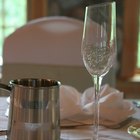
How Much Is a Single Serving Size of a ...
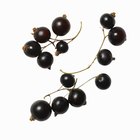
Can You Use Creme De Cassis As a ...
What Is the Difference Between 80 & 100 ...

Difference Between Percent Alcohol & ...

How to Long Pour a Cocktail

How to Calculate the ABV of a Mixed ...

Alcohol Mixing Rules

What Is a Good Substitute for ...

Can I Substitute Vodka for Rum in a ...

Brandy Flavoring Substitute

List of the Different Kinds of Mixed ...
List of Popular After Dinner Drinks

What Can You Mix With Blended Scotch?
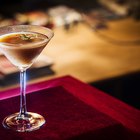
Chocolate Martini: How Many Calories?
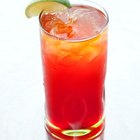
How to Calculate Punch for a Party
The Margarita With the Highest Calories
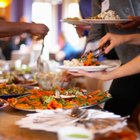
What are the Serving Sizes for Catering ...

How Does Homemade Soap Compare to ...

The Nutrition of Pad Ped

Substitutes For Tequila
References
- The New International Bartender's Guide; Random House
- Stylist UK: Welcome to the New Cocktail Hour
- The Fine Art of Mixing Drinks; David A. Embury
Writer Bio
Tom Ryan is a freelance writer, editor and English tutor. He graduated from the University of Pittsburgh with a degree in English writing, and has also worked as an arts and entertainment reporter with "The Pitt News" and a public relations and advertising copywriter with the Carnegie Library of Pittsburgh.
Photo Credits
Steve Mason/Photodisc/Getty Images